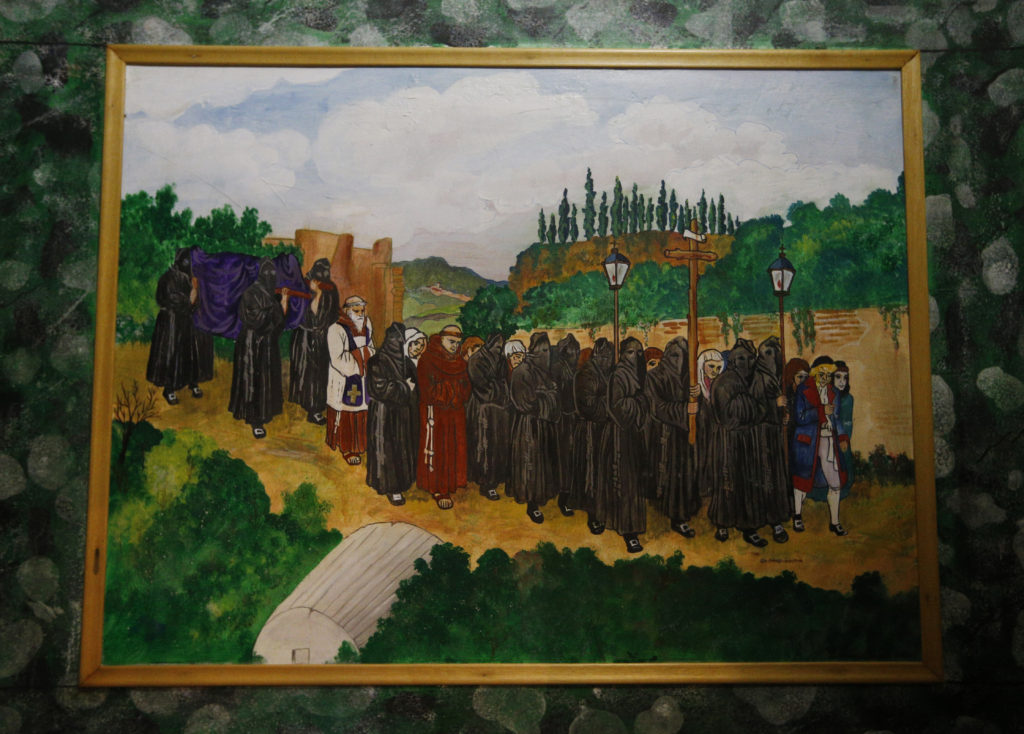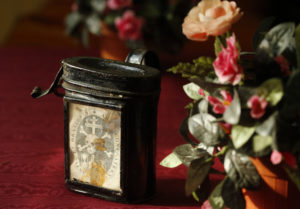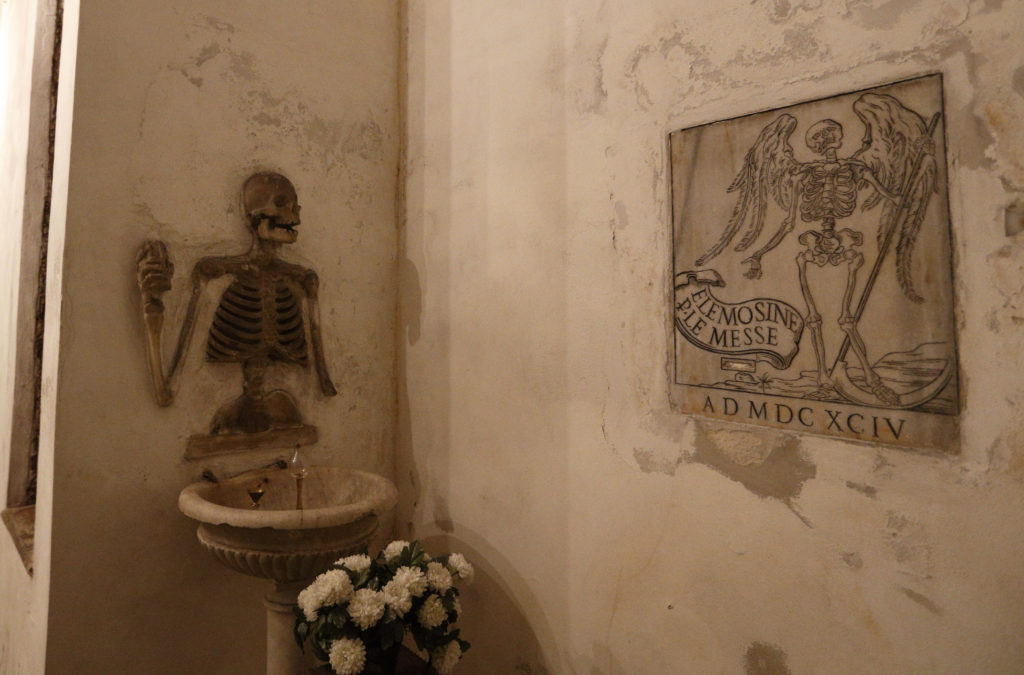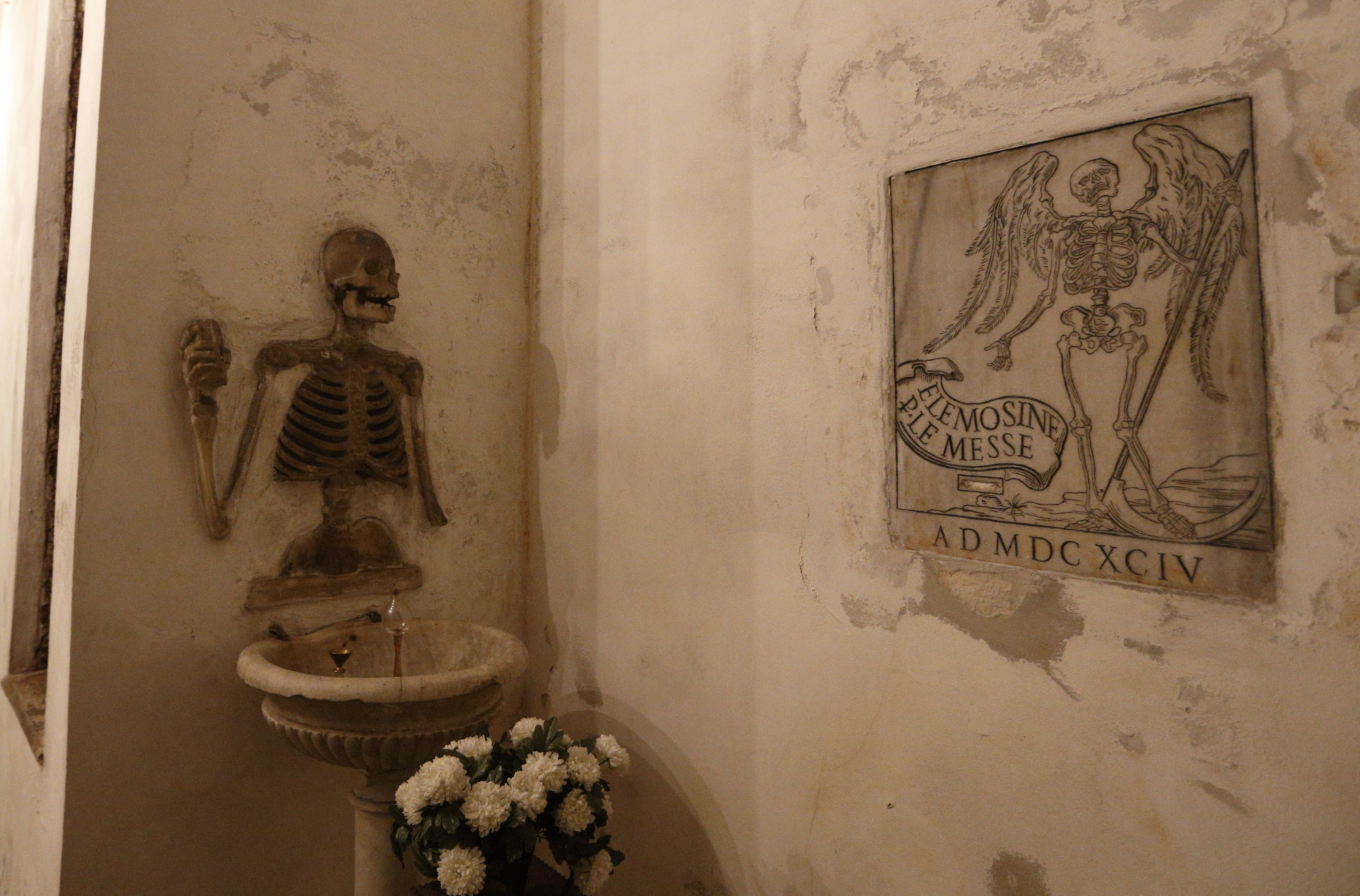
ROME (CNS) — If a pilgrim walking to Rome for a Holy Year fell mortally ill far from home or a poor tenant farmer died working in a field or an unidentifiable victim of murder was found, a group of courageous Christians buried these anonymous or forgotten dead with dignity.
Founded in 1538, the Archconfraternity of St. Mary of the Oration and Death in Rome spent nearly 500 years offering a Christian funeral and burial to those who would otherwise never have one.
Burying and praying for the dead are among the corporal and spiritual works of mercy Pope Francis has asked people to carry out during the upcoming Year of Mercy.
Many popes, over the past centuries, had supported the difficult and somber work of the archconfraternity, starting with Pope Paul III, who wanted to see the association formally established, said Alfonso Sapia, head of the archconfraternity.
During Advent in early December in 1538, a Capuchin priest gave such an impassioned homily about the tragedy of those abandoned at death and the immense spirit shown by those who risked danger and disease to bury them, he inspired a huge number of people in the pews to join the new lay association.
RELATED
Several decades later, Pope Paul V gave the confraternity’s chaplains special permission to celebrate Mass outside of a church, before sunrise and after sunset if necessary — “prerogatives that had been unthinkable” at the time, Sapia told Catholic News Service in mid-November.
Members often walked long distances at any time of day or night to get to an abandoned body. The special dispensation was granted because sometimes they couldn’t get the deceased to a cemetery quickly enough and the dangers of natural disasters, disease, wild animals or advanced decay necessitated immediate burial.
Recognizing the confraternity’s important work, St. Pope Pius V granted clemency every year to one prisoner on death row and entrusted the confraternity members and their families to take in the formerly condemned man and his family — teaching them skills, a trade and helping them back on their feet, Sapia said.

The pope also conceded to the confraternity the rare privilege of collecting money on the street and in taverns to pay for the burials of the poor. “It wasn’t legal to raise money without authorization from the pontiff,” he said.
Because taverns were still a hothouse of murder in the 16th century, “people would get drunk, and it would end up like in the Wild West: shooting pistols” and smashing things, he said. The owner always kept one of the confraternity’s black metal canisters on hand to collect spare change and donations to then pay for any eventual burials.
Located on the wide cobblestone road of Via Giulia, the Church of St. Mary of the Oration and Death — and the confraternity’s headquarters — are still surrounded by foreign embassies and ornate buildings once owned or inhabited by noble families and wealthy merchants.
Rome’s wealthiest and powerful families were almost always enthusiastic donors and even members of the confraternity, Sapia said.
“The more of a troublemaker they were, they more generous they were in donations, because that way the people would pray” for their souls and salvation from purgatory, Sapia said.
Large commemorative marble plaques with lengthy inscriptions and entreaties for people’s prayers decorate the walls behind a chapel of the church.
Another, more unexpected form of remembrance is seen in the lower portion of the church, where scores of skulls sit neatly in rows on wooden shelves set into the walls. The deceased’s name, and date and cause of death are chiseled onto the forehead.
Sapia said many confraternity members had wanted their skulls preserved in the church “as a testimony of affection” and as a way to say, “I love this confraternity and I will never leave it, not even after I die.”
Other skulls in the crypt belonged to the poor whose cause of death shows the difficult conditions just a few generations ago: almost all of the skulls belonging to women document them dying during childbirth, he said.

A holy water font is watched over by the upper torso of a skeleton, and the chandeliers lit overhead are an artistic composite of vertebrae and the triangular sacrum — “the sacred bone” — at the end of the spinal column. He said using bones serves as a reminder that from darkness and death there shall be light.
Sapia said such concrete reminders of death “seems awful and terrible” in today’s culture, but back then “people didn’t live past 50, and death was much more human,” with people being much more aware and accepting of dying.
“Besides praying for and burying the dead, the confraternity also taught people not to be hedonists,” living only for the present moment “and doing want we want right now,” he said.
“Instead what the confraternity told people was, ‘Yes, we have to live well, but most of all we have to die without being afraid of dying,'” which meant being ready for God’s judgment by trying to live a holy life.
With the group’s last burial in the 1950s, as a post-war Italian government began to provide basic human and social services, the archconfraternity’s mission had to change, he said.
Their work is now based “on the three C’s: Christ, charity and culture,” he said, as they promote sacred art and music.
Confraternities, Sapia said, have been essential in providing charitable care and preserving the spiritual life of the church, especially during the Reformation.
“When Martin Luther started the reform, people became much more distanced from the Catholic Church,” he said.
But while fewer people were attending Mass in Rome’s major basilicas, he said, the confraternity’s smaller churches stayed full, where “there wasn’t the arrogance of the cardinal” and people were simpler, more humble and more gracious.
This approach and attitude “helped the church in the Counter-Reformation,” he said, as the confraternities “were used to guide the church” toward successful reform.
Sapia said he sees a parallel with Pope Francis.
“The confraternity, as Francis says, smelled of sheep” and members didn’t wait for people to come to them for help, but bravely ventured off to bring the church to people in need, he said.







